Upper Banon Creek Falls is a gorgeous Vancouver Island waterfall not far from Chemainus, just north of Duncan. Though the walk to this stunning waterfall is relatively short, it is pretty steep and sure to get your heart pumping. The waterfall has only become well-known over the past few years, and what was once a vague route through the forest from a logging road has now become a clearly-defined well-booted trail. That said, while the trail is now difficult to lose, it is still steeper and rougher than any official maintained trail, with plenty of roots to step over and deadfall to climb over. During the winter months the roar of Upper Banon Creek Falls is deafening as it swells with rainwater, eventually calming in the summer months. Despite the beauty of Upper Banon Creek Falls, it’s still not as well-known as many other Vancouver Island waterfalls so you’re likely to have it all to yourself.
Continue reading this blog post for everything you need to know to experience Upper Banon Creek Falls on Vancouver Island for yourself, including distance, elevation gain, how to get there, the best time to visit, and lots of photos of my experience.
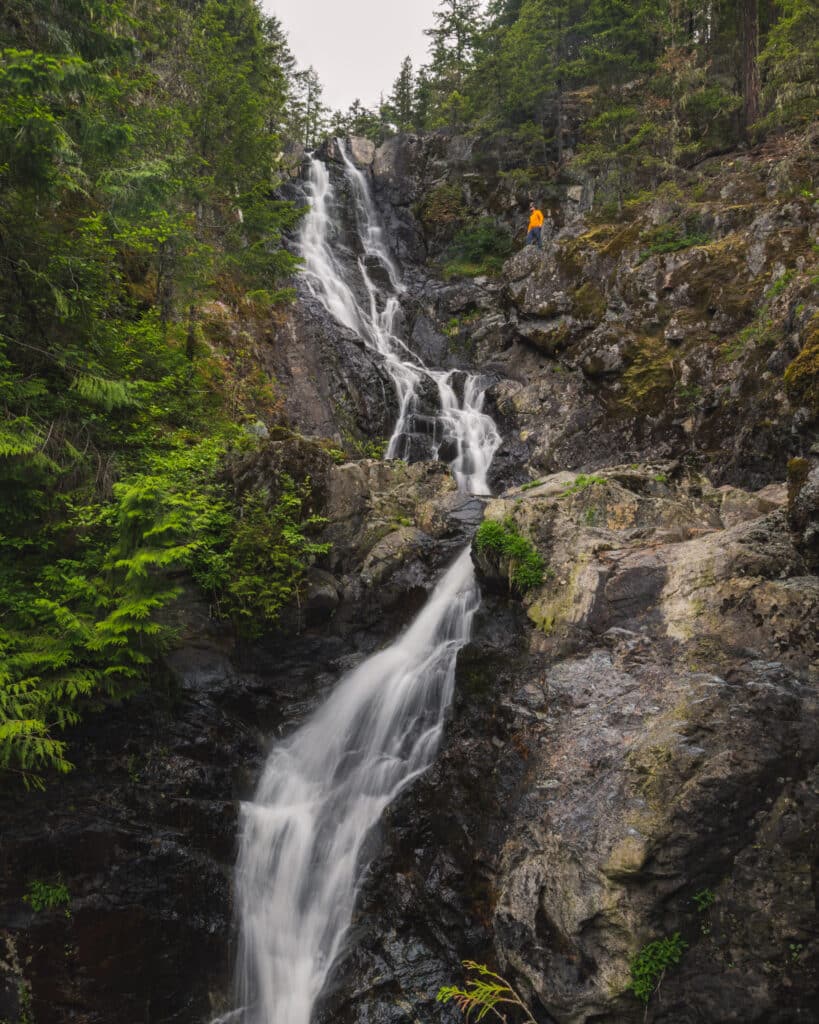
When hiking it’s important to avoid harmful practices such as disturbing plants or rock-stacking, or removing any natural object from flowers to rocks, as it’s important to leave the environment as natural as possible for the animals and for fellow hikers to enjoy in perpetuity. As many flowers as there are, there are few enough that if we all took one, then there wouldn’t be any left. Take only photos, leave only footprints.
If you haven’t heard of Leave No Trace principles, they’re also really essential to read up on before heading anywhere into the outdoors in general. Following these important principles basically means doing your best to leave beautiful places like Upper Banon Creek Falls as good (if not better) than you found them, both for their preservation and for the enjoyment of other visitors.
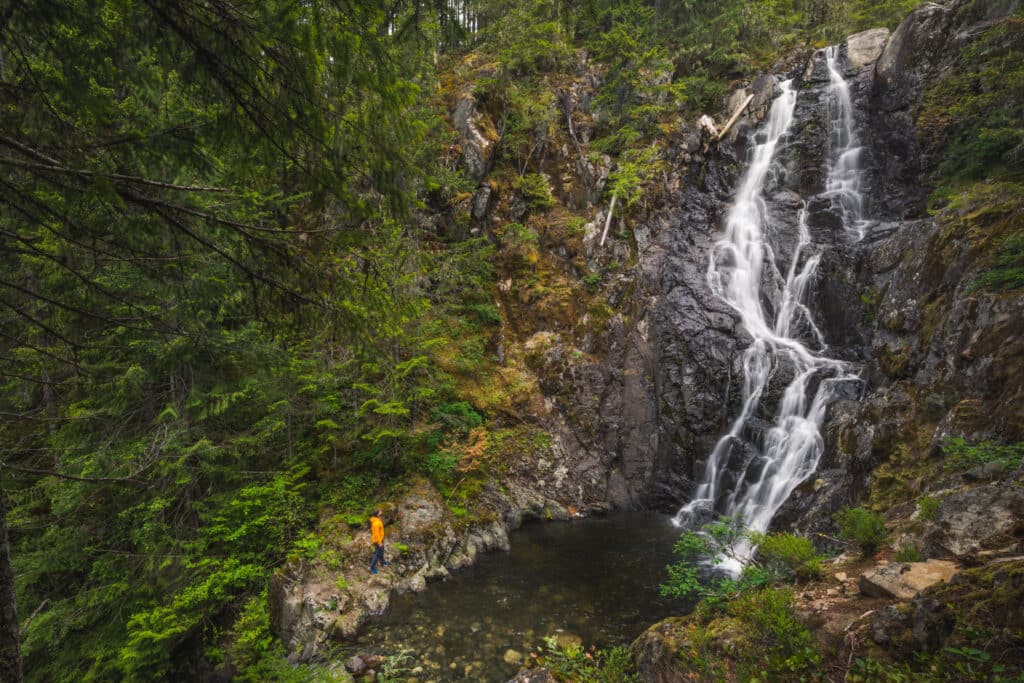
Upper Banon Creek Falls Round Trip Details
Distance: 2.4 KM / 1.5 MI
Elevation Gain: 130 m / 426 FT
Hiking Time: 1 HR
Hiking & Safety Tips
- Prepare for the possibility of wildlife encounters. There are almost no grizzly bears on Vancouver Island, but black bears are still common. Bear bells are proven to be an ineffective bear deterrent, and are even actively discouraged by Parks Canada. The best way to let bears know you’re around is simply to use your voice. Make sure to keep a respectful distance from wildlife and never feed the animals. It may seem kind but it doesn’t just kill wildlife and put people in danger, it’s also in many cases illegal.
- Research current trail conditions and make sure you are well-informed about the route before you leave, and assess if it is within your capability. Be aware of what time it gets dark and check the weather forecast. Make sure to tell someone where you’re going and when you expect to return. Every year as more and more people try hiking for the first time, the number of rescues goes up. Being prepared is the best defense.
- Pack everything you need for a successful hike, including enough water and energy-rich snacks. Remember to pack out everything you pack in though – don’t expect to find a convenient garbage can halfway up the trail. Bring appropriate layers (remember you’ll warm up once you start hiking) and sun protection. Hiking poles may be helpful but are not required. In addition to not leaving any garbage on the trail yourself, I highly recommend bringing a garbage bag and collecting any trash that you do see on the trail. You’re guaranteed to make the walk to Upper Banon Creek Falls a more enjoyable experience for the next person.
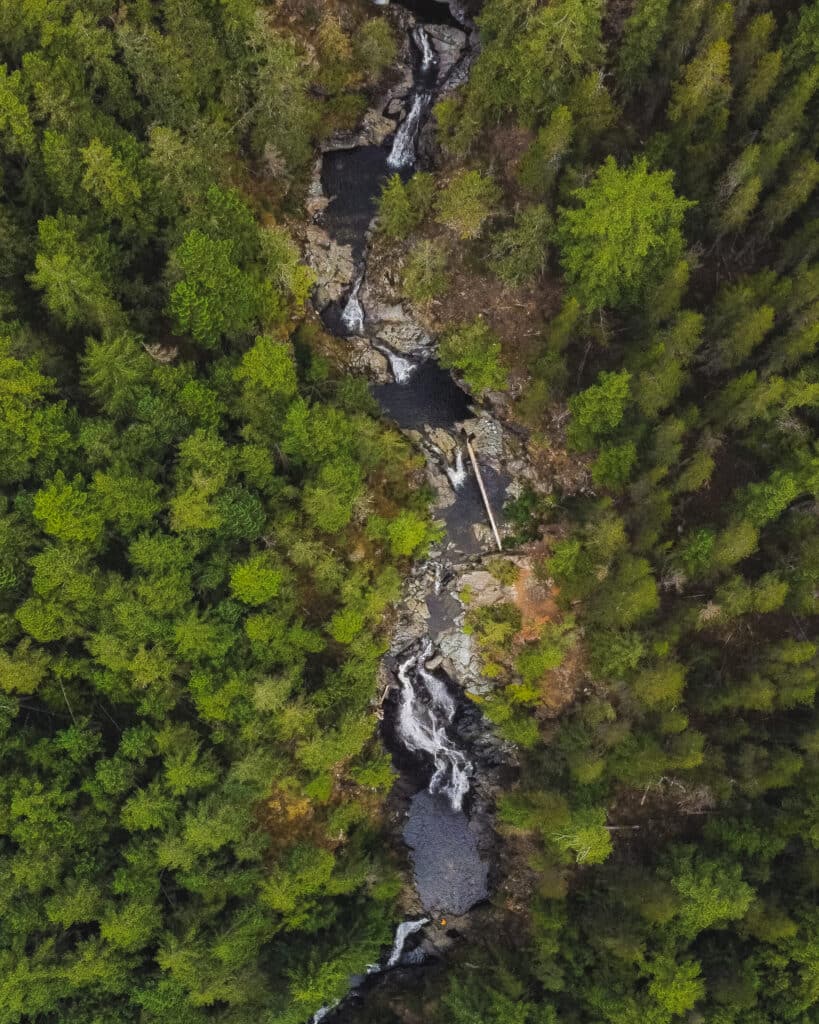
When to Visit Upper Banon Creek Falls
Like all waterfalls on Vancouver Island, the best time of year to visit Upper Banon Creek Falls is during the rainy months of October to April. During the peak of the rainy season on Vancouver Island, waterfalls can be guaranteed to be fat and gushing with water, with many of them drying up in the summer.
How to Get to Upper Banon Creek Falls Trailhead
Continue straight along the Banon Creek FSR for about 2.5 kms until reaching a four-way intersection with a bridge over Banon Creek visible straight ahead. Turn right at the intersection before the bridge and follow the road up for a further km. Turn left here and follow the road into the cutblock. The official start of the trail to Upper Banon Creek Falls is 1km down this road, but I suggest finding somewhere along the side of the road to pull off where there’s room and walking partway, as there isn’t too much room to safely park at the start of the trail itself.
Eventually you will reach a point where the logging road makes a sharp hairpin turn to the right. At the turn look for the trail continuing straight into the woods on the left. Someone has painted a small rock saying ‘falls’ next to the start of the trail.
avigation all the way to the trailhead, so I have included two pins. The first is the furthest point along the road that Google recognizes – from this point you will have to navigate on your own to the second pin – the exact location of the trailhead. To use the second pin you must use satellite view and navigate by eye. If you ask Google for directions to the trailhead it will send you the wrong way.
Click here to open the furthest point on the logging road navigable to by Google Maps.
Click here to open the exact trailhead location in Google Maps.
Walking to Upper Banon Creek Falls
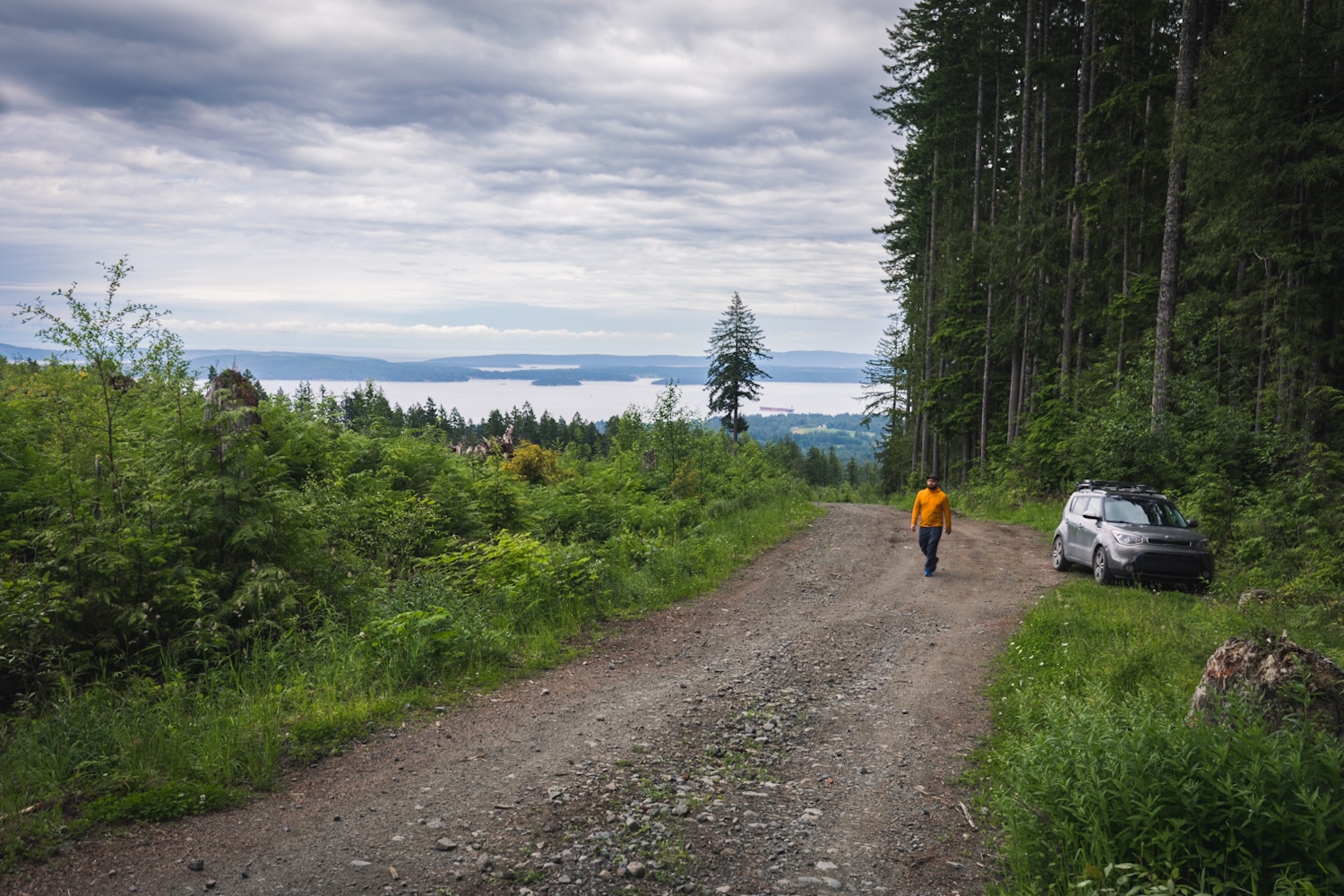
Pulled off of the logging road near the end of the cutblock. Fantastic views behind me. On a clear day the Vancouver skyline is visible in the distance.
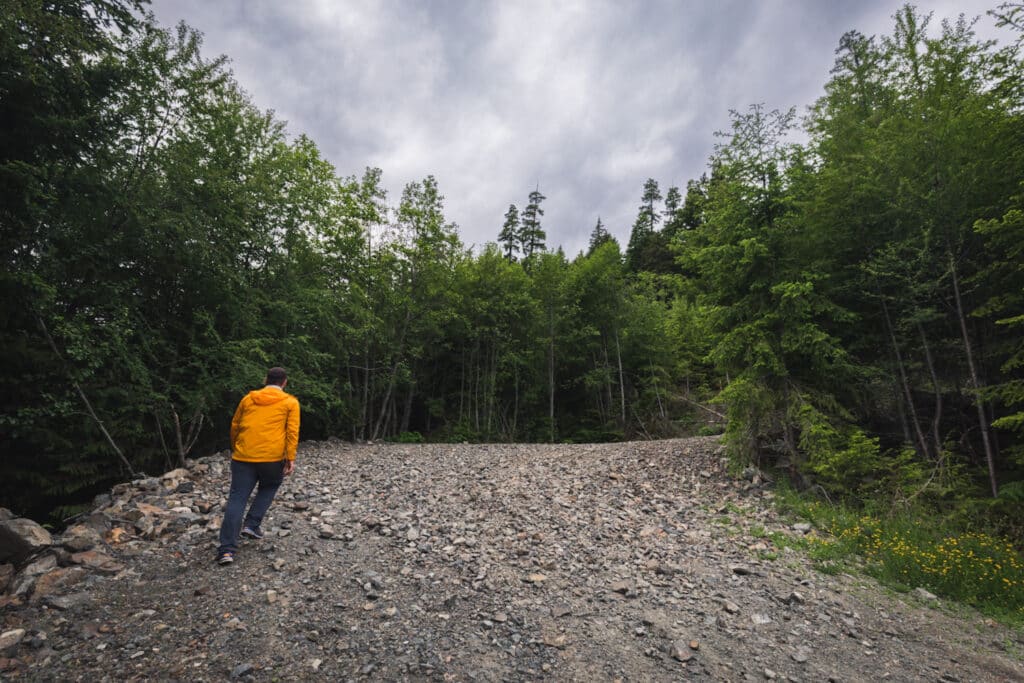
Proceeding up the logging road on foot to the the hairpin turn. The path head into the woods straight ahead,
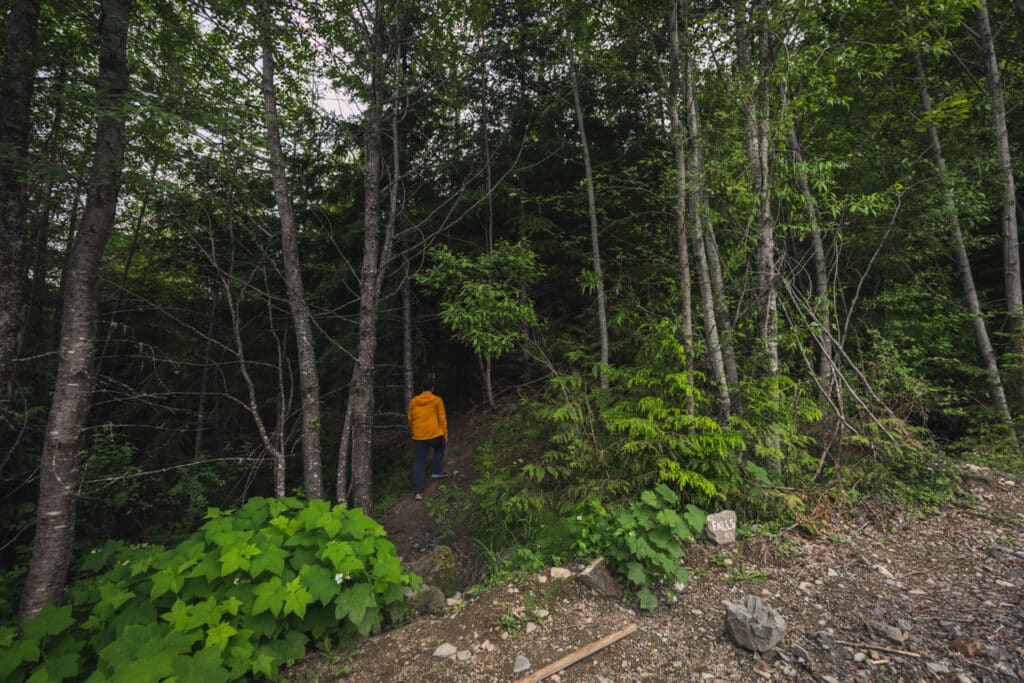
Someone has painted a little sign-rock near the start of the trail.
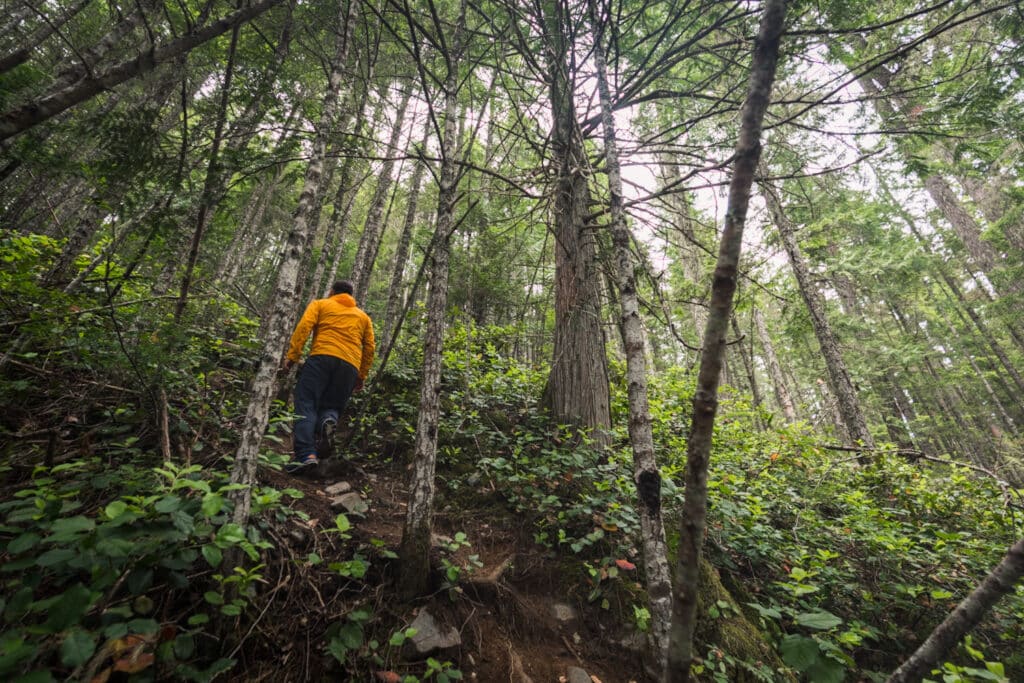
Up up up.
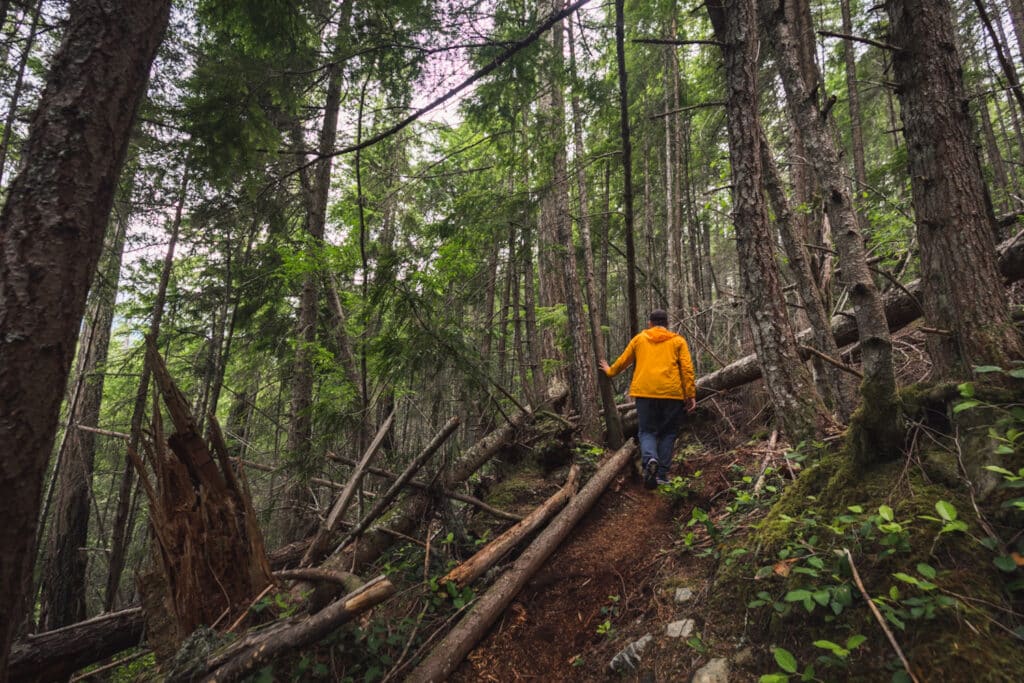
It looks like someone has cleared some deadfall off of the trail. It’s much appreciated.
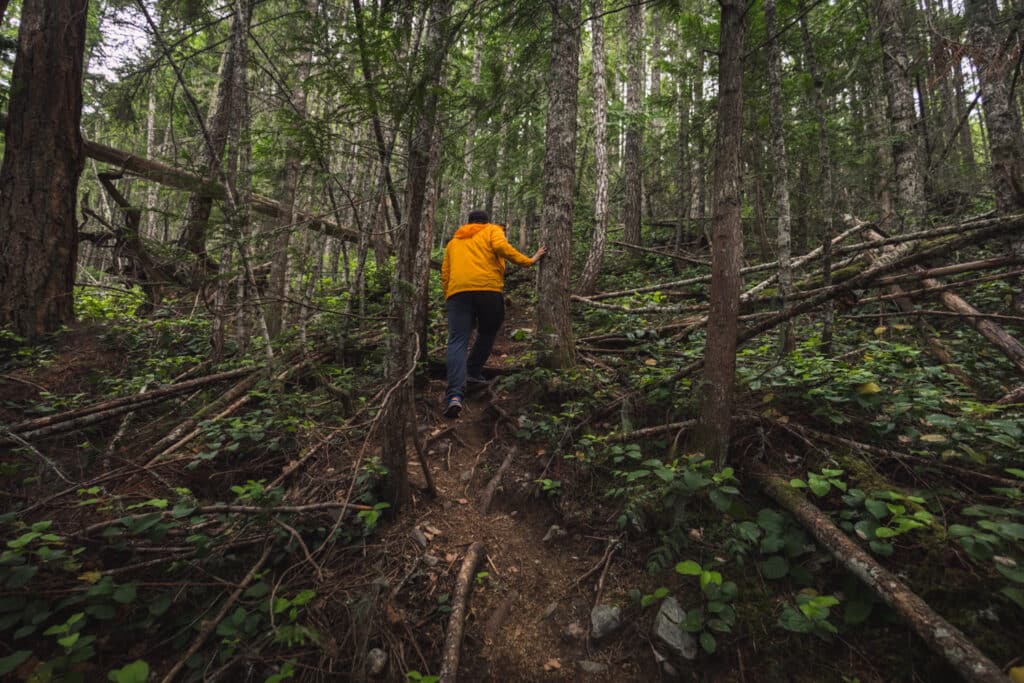
The trail to Upper Banon Creek Falls is plenty rooty and steep – any able bodied fit person should be able to do it though
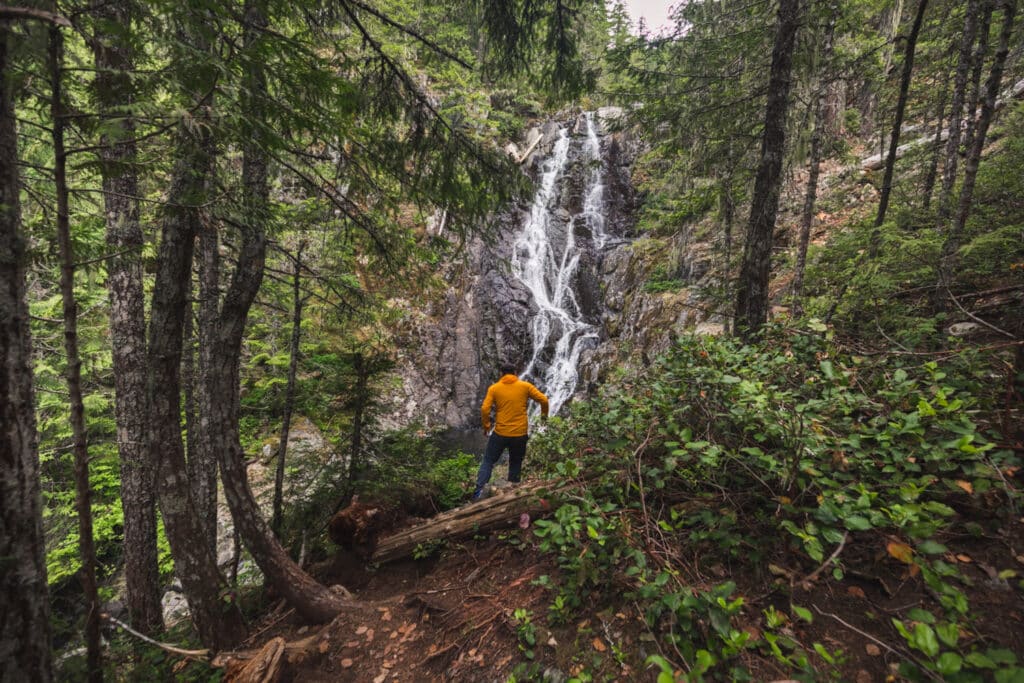
Descending down to Upper Banon Creek Falls. From here a rough trail continues up to the top of the falls as well.
Recommended Hiking Gear



Water is a must whenever I’m hiking, especially if the sun is going to be out. My favourite water filter I’ve used is the Katadyn BeFree 0.6L, which unlike other water filters I’ve used packs up really small and lightweight. For hikes where I know there won’t be any readily available water sources along the way, I make sure to bring my own. The Hydrapak Stow 1L bottle is my go-to, for the same reason that it’s made of a soft plastic that folds up and doesn’t take up any more extra space than necessary in my pack. Finally, Aquatabs are another great option for purifying water, with one tablet being suitable for one litre of water. I previously used the Grayl water filter while travelling internationally, and though I found its hard body more convenient for day to day use and easier to drink from, it has a little too much bulk for my fast-and-light style of hiking.



The secret to all my photos of gorgeous sunset and sunrise mountaintop views? A lot of hiking in the dark. And let me speak from personal experience when I say that the last thing that you want to happen when hiking is to be caught in the dark without a headlamp. I used the Black Diamond Spot 400 for years and it worked great – until I lost it on top of a mountain somewhere. The only downside to it was having to worry about the batteries dying, though there’s also a slightly more expensive version that has a rechargeable battery. Nowadays I’m using the Petzl Actik Core, which is a bit pricier than the more budget-friendly Black Diamond, but is also brighter, more comfortable (in my opinion), and has a hybrid power system that is rechargeable but can also take AAA batteries if needed.
You won’t see me using trekking poles on shorter hikes often – but on long hikes and backpacking trips, as well as certain scrambles, they are an absolute lifesaver. I’ve invested in a high quality ultra-lightweight pair of MSR DynaLock Ascent carbon poles which, while pricey, I don’t regret one bit. If you’re not entirely sure how much use you’re going to get out of a pair of trekking poles, the best budget-friendly option would be the Trekology Trek Z 2.0. Amazon does sell a lot of cheaper Made in China-style trekking poles for cheaper, but these usually are much much heavier and not worth buying.
All the best and most long-lasting cables and power banks I’ve ever owned have been Anker. I once had a phone cable from them that lasted me over three years of daily use! That’s why I keep an Anker PowerCore Essential 20K power bank on me. Like many people I use my phone for a lot of stuff when hiking (checking in with family, using online maps, taking photos, flying my drone) so I like to be prepared for that low battery warning by having a backup power source on me just in case.



The only socks I ever buy for myself are from Darn Tough, and I almost always make sure to wear them when hiking. After years of having no problems only wearing these comfortable and rugged socks for hikes, I accidentally wore a pair of no-name socks on a hike last year and ended up with blisters on both feet. Safe to say I’m back to sticking with the Darn Tough. And the best part? They have a lifetime guarantee, meaning that if they ever wear out you can send them back for a brand new pair. For hiking footwear I go between a pair of lightweight approach shoes for quick and dirty mountain ascents or anything involving scrambling and more heavy-duty boots for longer treks. I’ve worn a couple different versions of the lightweight but super durable Arc’teryx Konseal FL 2 approach shoes for a few years now and am very impressed with the durability. I also really like the thick toecap that keeps me protected every time I stumble into a root or large rock. For longer, tougher, or muddier treks I rely on my LOWA Camino EVO GTX, which I find insanely comfortable and made of very high quality.



I wear my Ar’teryx Gamma Lightweight Pants on every single hike I go on, and on many days when I’m not hiking. After several years of abuse they are still holding together extraordinarily well, with only a few small holes from where I’ve fallen down and some slight stains from being repeatedly coated with mud. They’re lightweight, breathable, and super comfortable. For lightweight and breathable hiking tops I’m a big fan of both the Patagonia Capilene Shirt and the MEC Core Shirt. My Arc’teryx Squamish Hoody shows up in a lot of my photos. It’s super lightweight and packable, and does a great job of cutting the wind while also being pretty breathable. I also have an Arc’teryx Atom Hoody and Arc’teryx Beta LT that I pull out for cooler or wetter conditions.
I hope you enjoyed this guide to hiking to Upper Banon Creek Falls on Vancouver Island! Feel free to leave any questions in the comment section below or to contact me directly via social media.
